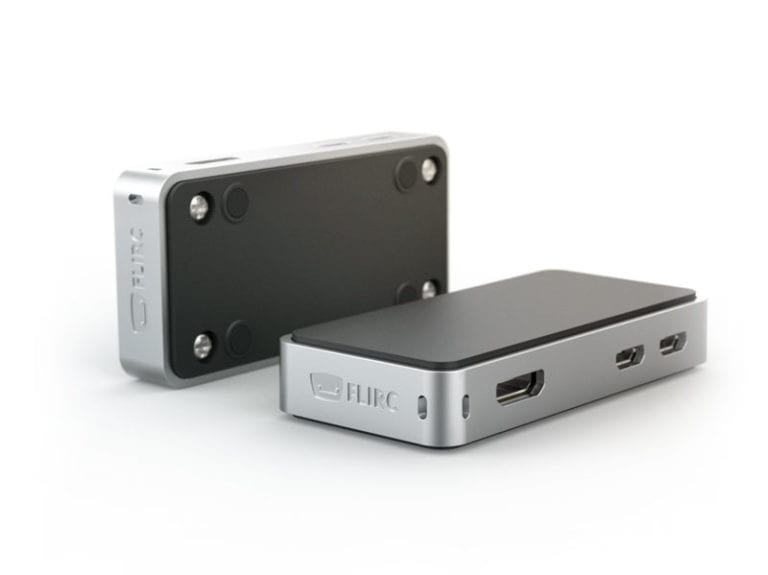

- Flirc usb adapter serial#
- Flirc usb adapter pro#
- Flirc usb adapter software#
- Flirc usb adapter code#
- Flirc usb adapter plus#
Much like the previous Pulse-Eight article, my intention is to highlight what I think is a great product that many users may not have heard about that dramatically simplifies the process of building an XBMC htpc. I have recently come across a product which has enhanced my XBMC experience, and I wanted to give back to the community and share my findings about Flirc.

(Disclaimer – whilst I am “staff” (Read: a forum moderator) on the FLIRC forums I am not employed by Flirc and do not benefit directly, financially or otherwise, from the project I am about to discuss.) I love XBMC: the application, the project and everything it envelops. I’ve been an XBMC user for about 3 years, firstly using my mac then using a shuttle box running Openelec (so I didn’t have to keep connecting/ disconnecting my MacBook Pro). My name is Chris (or pseudo7 on the forums).
Flirc usb adapter software#
I’d also like to invite any other software writers or manufacturers to contact me in the forums at username natethomas, if you have come up with a new and unique method for improving the usability of XBMC and would like to share your project.

This week, I’d like to introduce Chris (psuedo7 in the forum), who will be telling us a bit about the project FLIRC. And do share your experience if you decide to do this project.In a continuation of the series begun with our write-up of the USB-CEC adapter, we would like to take the time today to highlight another adapter out there that makes controlling XBMC dramatically easier. Hence only known IR remotes are supported like sony, NEC, RC5 etc.įeel free to ask any questions. However I’m planning to do this sometime later.Ģ.
Flirc usb adapter code#
You can also refer to the IR remote decoder example code I’ve linked above.
Flirc usb adapter serial#
PGD and PGC pins used to program the chip) so I can use the PICKIT2’s UART feature to receive serial data without connecting any other usb to serial converter to the board. I used UART_remappable module mapped Tx and Rx pins to RB6 and RB7 respectively (ie. To decode the ir code sent by your remote, You can use UART to send the integer value inside ir_result variable(in case of NEC remote). You can refer to the project code for more info on that. I’ve slightly modified the code to trigger the decoding process using an external Interrupt pin so the program don’t need to constantly check whether any data is received from the IR decoder. I’ve used IR remote decoder example code from this link. But I’m sure you guys can figure that out on your own.Īlternatively, you can convert the code to MPlabX (please send me the project folder if you do).
Flirc usb adapter pro#
Note that you’ll need the registered version of the MikroC pro for pic IDE to compile the project as you cannot compile a code larger than 2000 words in the demo version. There is precompiled Hex file that you can burn to the chip using PICKIT2 or any other pic programmer. Source code is attached in the project zip file. I used MikroC pro for PIC to build the firmware. But, if you want to build the circuit I built, you’ll need very steady hands and expert soldering skills. Hence it’s not very hard to build this circuit. The list of components required to make this project is very tiny. And third, is that I have several of these laying around in my stock. Second, this mcu supports usb communication without using an external crystal/resonator which again helps reducing the board size. First, this mcu is available in tiny QFN package which helps reducing the overall board size. I used this microcontroller because of three reasons. So, we move on to the fun way.įor this project, I used a PIC18F25J50 microcontroller with a TSOP IR decoder. Even if you use the tiniest Leonardo compatible board.
Flirc usb adapter plus#
Plus there are similar projects already available. But let’s be real here, you cannot use a development oriented board to create something to be used on a daily basis. There is even an IR library to easily decode IR signals from the remote. Now, to the project, we can do this using two ways.Įasy way would be to use and arduino Leonardo compatible board which can easily made to be recognized as an HID keyboard or mouse to the computer. From what I gathered, it recognizes as an HID keyboard to the computer. So basically what FLIRC do is convert IR signals received from any remote to HID signals. But I thought, Hey! Why buy something I can make at home. This is my first Instructable.Ī while ago I got to know about the FLIRC IR receiver which I thought of buying.


 0 kommentar(er)
0 kommentar(er)
